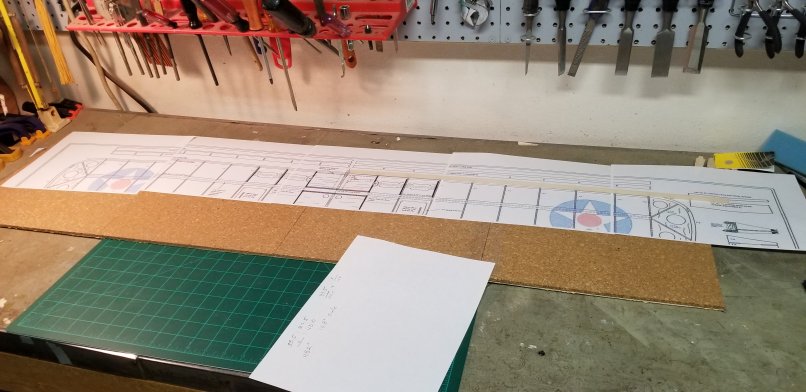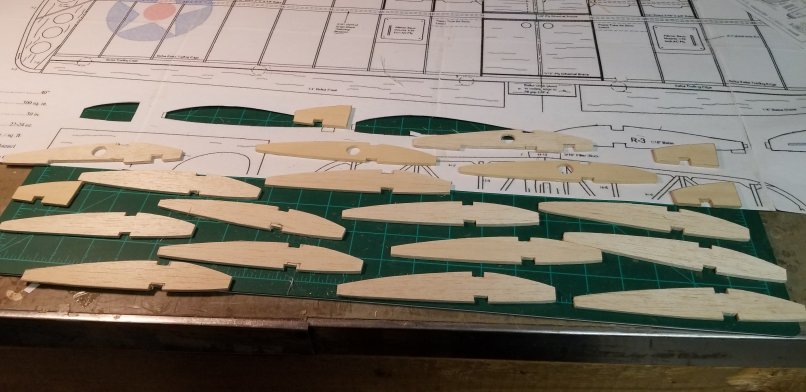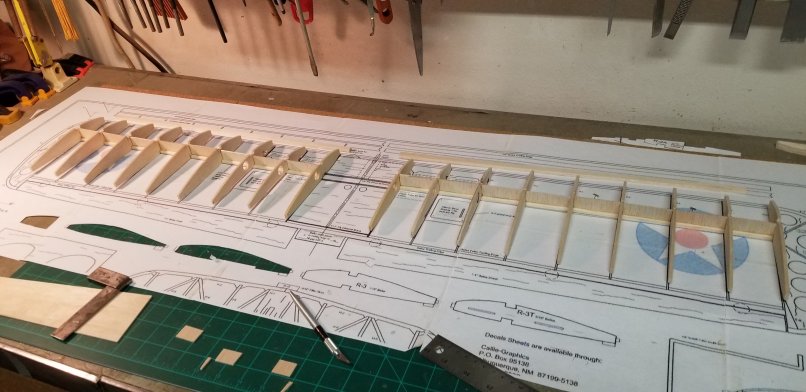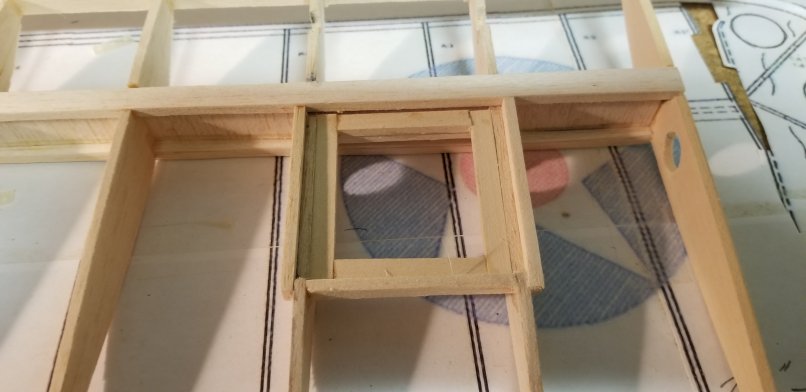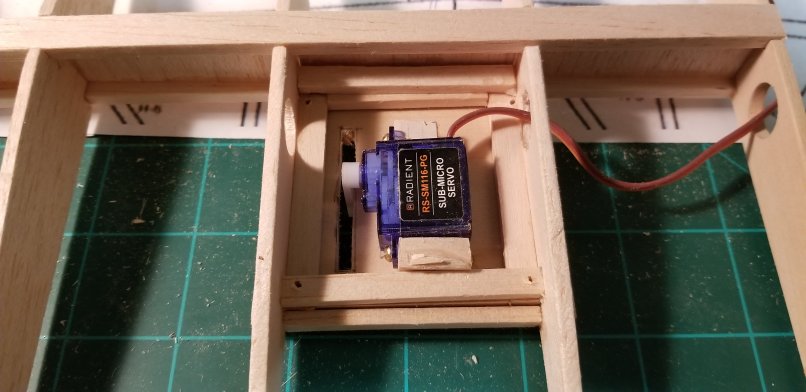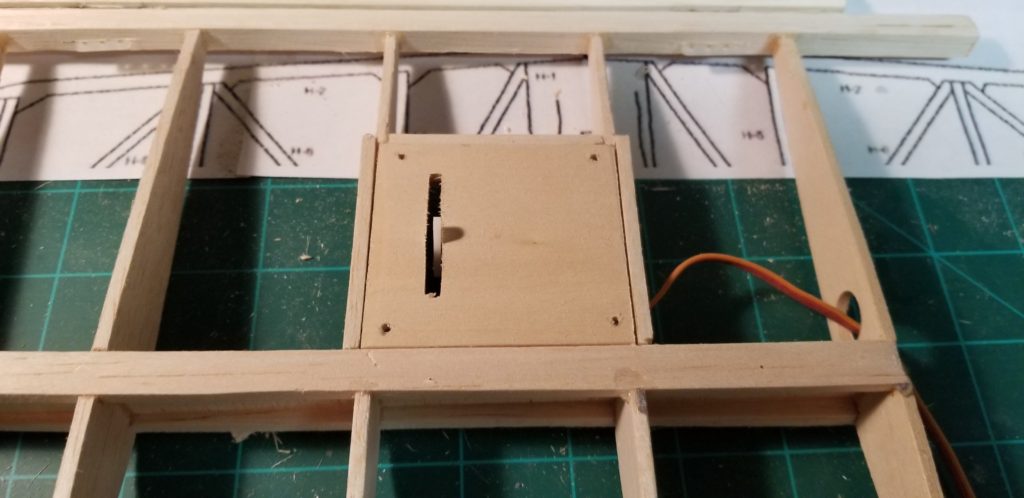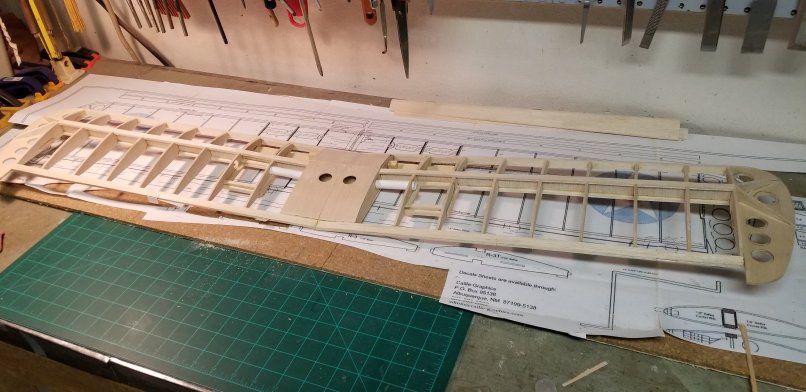Sunday, September 30
At this point, I had a partially-built fuselage in my hands and I suddenly realize that none of the motors I currently had in stock would fit this plane. I had already noticed that the micro servos in the wing barely fit within the wing ribs. I did like the 1/16th scale — it was not much larger than the Horizon park flyers that I regularly flew. However, I really needed to go to the next level with this.
So… I made an executive decision to abandon the smaller plane for the time being and increase the scale closer to the original model. I’d go back later and finish the smaller version. It would make an interesting teachable demonstration: The same plane made from the same plan, at two different scales. I also decided to keep track of the time spent on the construction of this plane, just for grins and giggles. I accepted the possibility that many hours of creation can be dashed in a matter of seconds — it’s the nature of the hobby. I decided to strengthen the model wherever I could, even if it added extra weight.
Here we go!
The first thing to do was to plug the small plan back into the Block Poster website to create the new plan size. After some calculations, I was able to print out a plan with a wingspan of 44 inches–just a little larger than the original model at 40 inches. [Again, I would have had a clearer plan if I had taken the original PDF to Office Max for a large print copy.]
To determine the scale, I simply divided the wingspan of the real PT-19 (converted into inches) by my model wingspan. In this case, 432″ divided by 44″ yields 9.8 which made this a 1/10th scale construction. That sounded like a legitimate scale.
Unfortunately, the new plan was so large, I needed to cut it up to use a section at a time.
Having done this once, the process was familiar, but this time I had a chance to improve my design. There would be more space for the hardware and electric components.
Tuesday, October 2
For example, there was more room for the aileron servos.
The wing went together fairly smoothly and seemed fairly strong.

